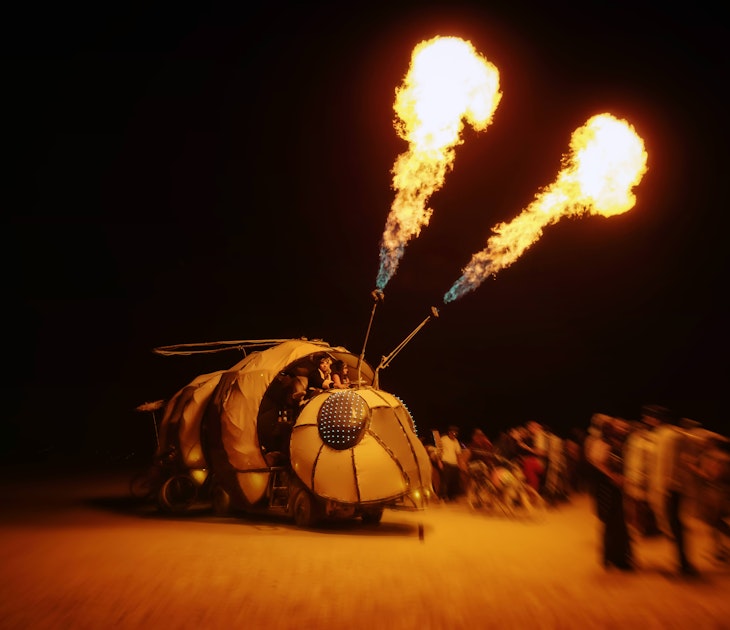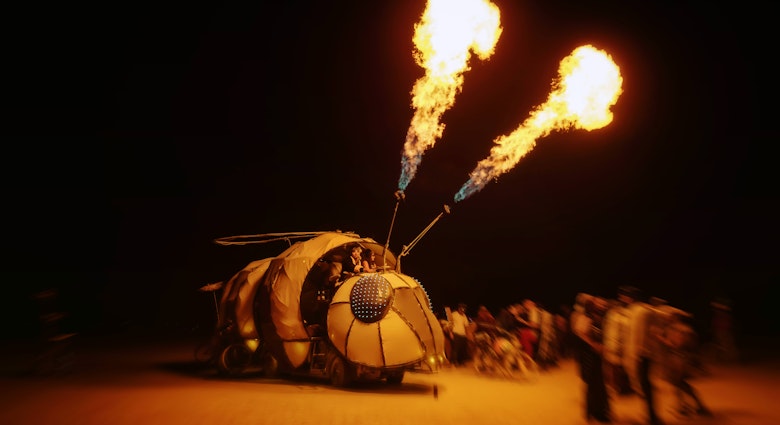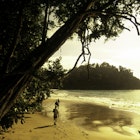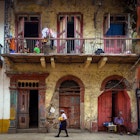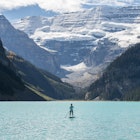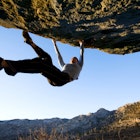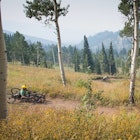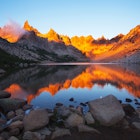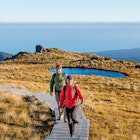Misty jungles, Caribbean beaches, volcanoes, monkeys, sloths, toucans, world-class surf, cloud-forest trails, ziplines… pura vida adventures abound in Costa Rica.
The world’s an unfair place and rarely is this more obvious than in Costa Rica. The small Central American country has many times more than its fair share of natural splendor. Pura vida (pure life) is the Ticos’ (Costa Ricans’) spot-on national catchphrase. Costa Rica doesn’t have an army, but it does have a spine of green mountains and smoking volcanoes, draped with lush rain- and cloud forests, and on both sides of the fortunate nation these lead down to mangrove swamps and long palm-fringed sandy beaches with seductive surf breaks. Wildlife abounds, from crocodiles to toucans, howler monkeys to sloths. You hate to use a cliche like "paradise", but it’s almost unavoidable here.

Unlike its neighbors, Costa Rica has a history of stability and prosperity; education and healthcare are the best in the isthmus and the tourist infrastructure is excellent. It’s a little more expensive than its neighbours – a little bit more Americanised – but in return it’s safer and easier to explore. It’s the main ecotourism destination in Central America, with 25% of the landmass protected, spectacular national parks, and nature and marine reserves teeming with biodiversity – more than the US and Europe combined.
Costa Rica is a great place to come and do nothing. But also a great place to come and do plenty.
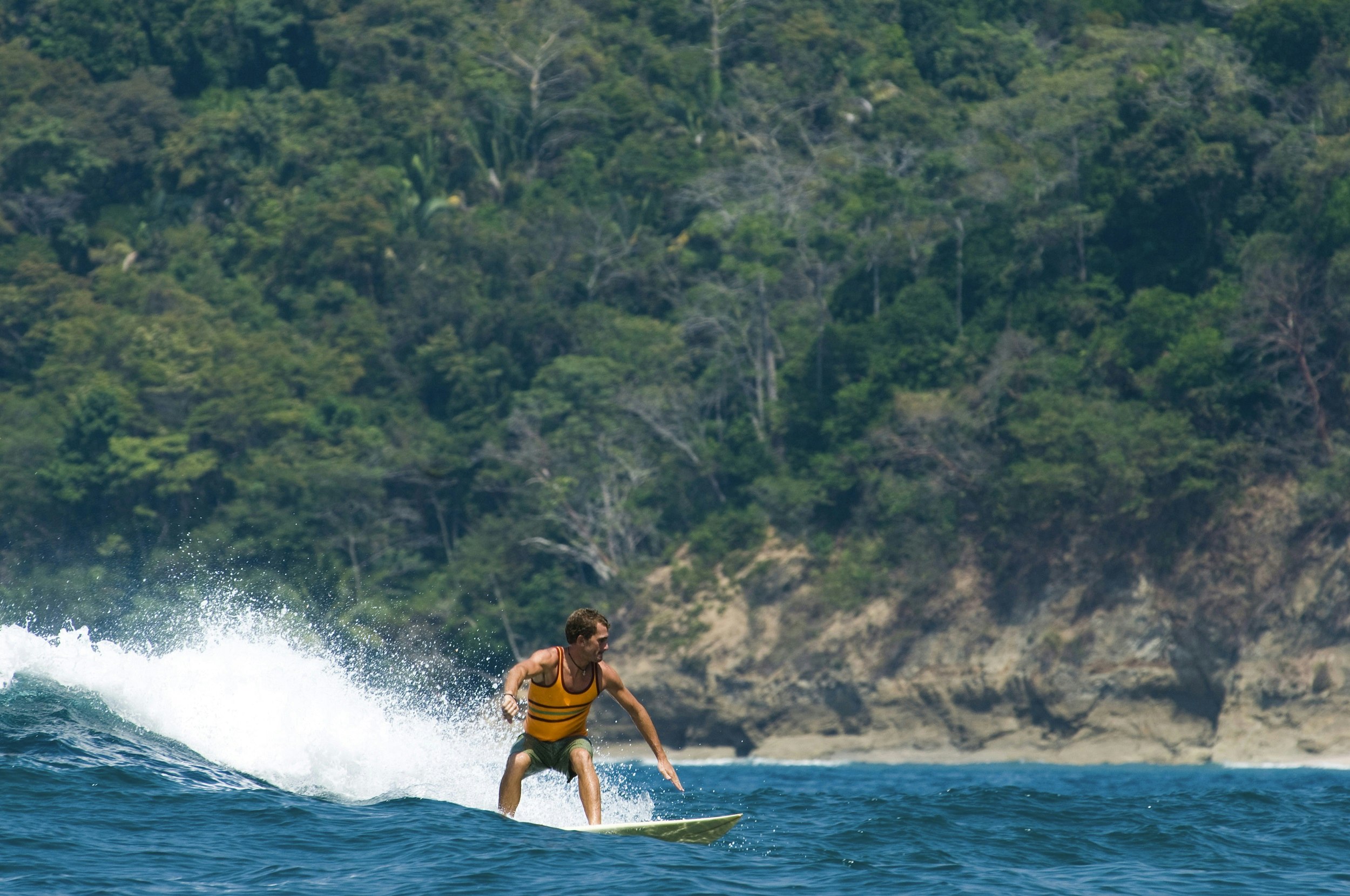
Surfing
Costa Rica spoils surfers rotten with more than 50 breaks – lefts and rights, beach and point breaks, reefs and river mouths – on both the Pacific and Caribbean coasts, and the water is warm all year round. And, for boardless breakchancers and beginners, practically every beach community offers hire and lessons.
Salsa Brava, on the Caribbean Coast at Puerto Viejo de Talamanca, is perhaps the most famous. Big powerful waves break over a sharp coral reef, making it better suited to the more seasoned surfer.
The secluded jungle beach of Playa Pavones, in the far southwest, is similarly renowned in surf circles and populated by more serious surfers who brave one of the longest rides in the world, the notorious three-minute left point break.
Surf is excellent along the Pacific Coast, with Playa Grande, on the northeastern Nicoya Peninsula, being another popular spot. A few kilometres south, the gentle surf at Playa Tamarindo suits beginners and the semi-experienced, while nearby Playa Langosta better befits the surf savvy. Playa Guiones, also on Nicoya, is blessed with consistent waves that tend to drop gently for newbies and intermediates alike, while more advanced surfers practise their tricks here too.
Playa Jacó, a straight line to the Pacific Coast from capital San José, is beginner friendly. Whereas neighbouring Playa Hermosa can get huge swells and changeable conditions and is better suited to the experienced.
Other popular surf hubs include the laid-back hippie haunt Dominical, the pristine beaches of Mal País, plus Santa Teresa and Playa Hermosa.
Read more: Catch a wave in the 10 best countries for surfing

Hiking
From jungle treks to volcano climbs, the country’s natural wonders are begging to be explored on foot. Cloud forests, for example, cover a mere 0.25% of land on Earth, yet can be easily experienced in Costa Rica. Rustling with wildlife, swathed in mist, exploding with mossy vines, ferns and rushing streams, it’s proper Jungle Book stuff.
Monteverde
Reserva Biológica Bosque Nuboso Monteverde is one of the best parks in Central America, with an estimated 2500 kinds of plant, more than 100 mammal species and 400 vivid varieties of birdlife, including the colour-splattered quetzal. The park enjoys unique geographical conditions: humid trade winds from the Caribbean rush up wooded slopes to cool and condense into clouds loitering above the trees, creating a marvellously misty netherworld. The extra oxygen has helped foment potent biodiversity among the reserve’s fecund flora, where orchids and bromeliads bloom. Ten short but well-maintained trails tiptoe through the lichen-wrapped tall trees, and you can stay overnight in huts.
Volcán Arenal
Volcán Arenal is another enticing hiking region. Not least because afterwards you can kick back in a volcano-heated pool to soothe aching legs. Well-marked trails cobweb the park, leading to waterfalls, crater lakes and lava flows. The two-to-three-hour Cerro Chato Trail climbs steeply through sky-bothering virgin-growth forest to reach the summit of Cerro Chato and a swimmable volcanic lake at 1200m.

Cerro Chirripó
Parque Nacional Chirripó’s Cerro Chirripó (3820m) is the highest mountain in Costa Rica. Its summit is a popular two-day trek from San Gerardo de Rivas, passing through different climatic zones, from lush cloud forests to sparse rocky terrain. A stay at Crestones Base Lodge gets you to the summit for the next day’s dawn. Though beautiful, it can be a challenging hike, only 16km in distance but with more than 2500m of climbing. However, seeing the sun rise from above the clouds is a classic pura vida experience.
Manuel Antonio
Pristine beaches, turquoise seas, bundles of wildlife, cliffside restaurants and tasty trails combine to make uber-green Parque Nacional Manuel Antonio the country’s most popular national park – and it gets busy here in peak season. There are seven short trails and off-trail hiking isn’t permitted, so it’s mostly about wildlife spotting, waterfalls, surfing, feasting and watching the sun sink into the sea and setting the horizon on fire at the day’s end.

Corcovado
Parque Nacional Corcovado in the south is home to an incredible 2.5% of the world’s total biodiversity. You’ll find deserted beaches, waterfalls, high tree canopies and teeming wildlife here. Humidity can reach 100%, however, and solo trekking isn’t recommended, due to pumas, jaguars, crocodiles, swamps, wild rivers, snakes and more. This really is a wild place.
Bahía Drake
Neighbouring Bahía Drake also offers a beautiful and remote experience. Macaws and howler monkeys cause a cacophony in the canopy, while dolphins frolic in the marine reserve. A 17km trail between Agujitas and the San Pedrillo Ranger Station is a superb day hike, with some handsome beaches and plenty of wildlife spotting.
Read more: 8 epic hikes of the world

Diving and snorkelling
While Central America’s Caribbean coast is blessed with miles of unbroken barrier reef, making it one of the world’s best scuba-diving and snorkelling destinations, Costa Rica’s diving is trumped by Belize and Honduras to the north. But satisfactory snorkelling can be had off both shores, especially the southern Caribbean Coast, though conditions are variable. Other prime areas for fish-bothering are the impressive coral reefs at Bahía Ballena and Manzanilla. Bahía Drake is largely cut off from the rest of the country, so it’s bulging with wildlife, with Isla del Caño the best place for meeting marine life while in snorkel and fins.
Read more: 10 of the world's best learn-to-dive destinations
Kayaking
Kayaking is a great way to explore Costa Rica’s rivers, lagoons and mangroves. Paddle to Golf Rica from Puerto Jiménez and you might have whales for company. Elsewhere, the mangroves of Bahía Drake are teeming with wildlife.
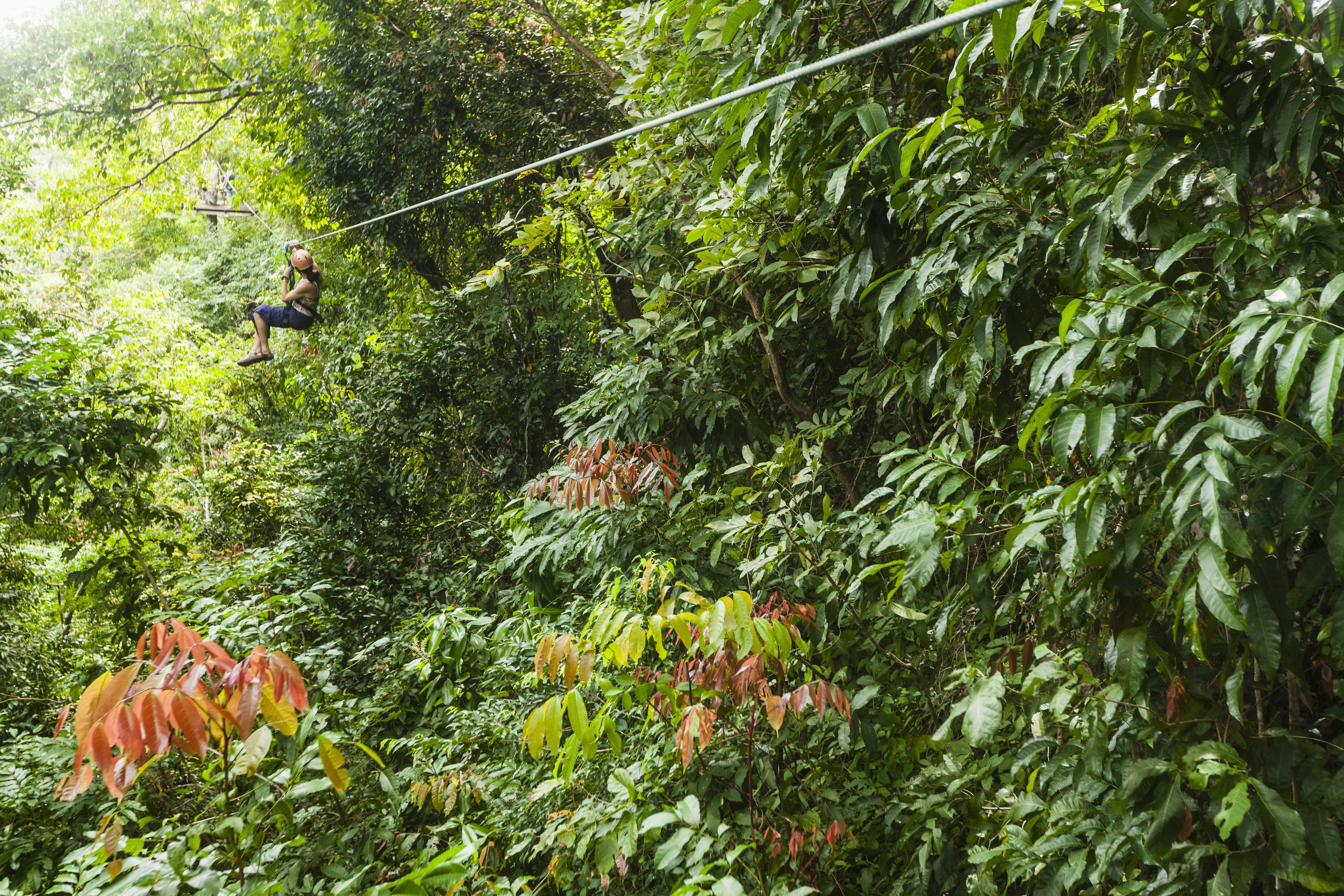
Ziplining
Squeal-inducing, ziplining canopy tours are to Costa Rica what bungee jumping is to New Zealand – the concept started here. The two main destinations for a jungle rush are around Volcán Arenal and Monteverde. A dozen cables zip across the Río Arenal canopy, and trips include waterfalls and entry to the resort’s swimming pool and 13 thermal pools. Selvatura, in Monteverde, has 3km of cables, 18 platforms and a huge, intimidating Tarzan swing.
Mountain biking
The Arenal region is the mountain-biking hub, with a variety of tour options. With your own bike, the two-day Vuelta al Lago is an exciting annual mountain-bike ride around Lago de Arenal. Near the park entrance, a private network of bike-friendly trails follows the lava flow from the 1968 explosion. La Ruta de los Conquistadores is a multi-stage race that crosses Costa Rica from the Pacific to the Caribbean coast over three days and about 400km.

Whitewater rafting
If rafting’s your thing, Costa Rica has top-notch whitewater rafting up to class V. Ride the wild torrents on the Reventazón and Pacuare rivers in the Valle Central, while you can find marginally less hair-raising options at Puerto Viejo de Sarapiquí.
Trail running
Trail running is a growing sport here and, over six days each February, the Coastal Challenge takes runners on 240km of trails, up and down mountains, through jungles and along beaches in the country’s southwest, including Dominical and Bahía Drake.
You might also like:
The 10 best things to do in San José's Barrio Escalante
Find uncommon ground at Costa Rica's 5 best coffee tours
The 10 best sustainable trips for families

